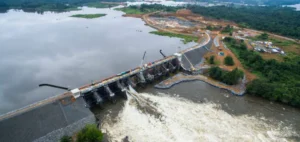This partnership is part of Bhutan’s efforts to diversify its economy and reduce the high unemployment rate that drives many young people to seek opportunities abroad. By attracting foreign investors, the country hopes to stimulate job creation and promote sustainable development.
Details of the Agreement
According to a statement from Druk Holding and Investments (DHI), led by Ujjwal Deep Dahal, the agreement entails Reliance building 770 megawatts of hydroelectric energy and 500 megawatts of solar energy. These new capacities represent more than half of Bhutan’s current production, which totals 2,444 megawatts, 99% of which come from hydroelectricity.
The Reliance group, owned by Indian billionaire Anil Ambani, will play a key role in implementing these projects. The solar plant is expected to be operational within the next two years, while the timeline for the hydroelectric plant has yet to be determined.
Economic and Social Impact
Reliance’s investment in Bhutan is seen as an opportunity for the country to strengthen its energy infrastructures and boost its economy. The creation of the “City of Mindfulness” around Gelephu, including a special economic zone and a new airport, is also a major component of this agreement. This ambitious project aims to attract more investments and create an environment conducive to economic development.
Exportation and Regional Collaboration
A portion of the energy produced by the new infrastructures will be exported to India, thereby strengthening the energy ties between the two countries. This energy flow will not only help meet India’s growing demand but also stabilize Bhutan’s economy by diversifying its revenue sources.
Future Prospects
Reliance has expressed optimism about this partnership, stating its desire to become Bhutan’s main partner in the transition towards a greener future. This collaboration could serve as a model for other similar initiatives in the region, promoting the use of renewable energies and sustainable development.






















